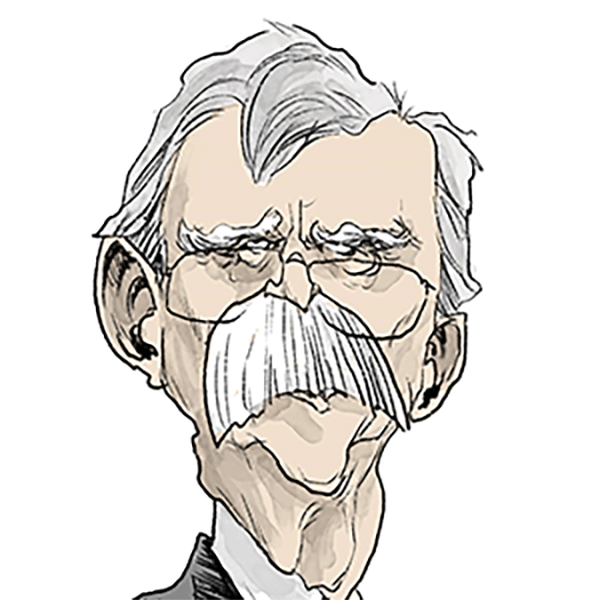Stephen Mihm: The 1920s immigration mistake America may repeat
Published in Op Eds
The New York Times recently reported that the Trump administration is “considering a radical overhaul” of the refugee system in the U.S. that would, in the publication’s estimation, “favor White people” by restricting immigration to English speakers, Europeans and White South Africans.
At first glance, this may seem like just another provocation on par with President Donald Trump’s profane rant against Haiti and African countries; his stated preference for immigrants from Norway, Denmark and Switzerland; his bizarre comments about immigrants carrying “bad genes” and other invective.
But it’s more likely we’re witnessing an escalation from random rhetoric to the implementation of concrete restrictions. The shift arguably began with Trump’s travel ban on majority-Muslim countries, but what he is now considering looks like the revival of a discredited policy from the 1920s that left a lasting humanitarian stain on the country. Back then, the U.S. imposed quotas that largely ended immigration from many countries, even as it left the door open to the same groups that Trump now elevates.
Understanding how it happened then is essential to seeing how easily, a century later, it could happen again.
It’s hard to believe now, but until World War I, the U.S. did little to regulate immigration, with the notable exception of bans on Chinese immigrants. There were no passports, no visas, no green cards and basically, no restrictions. By one estimate, only 2% of the arrivals at Ellis Island got turned away, mostly for health reasons.
While many immigrants originally hailed from Ireland, Germany and other countries in Northern and Western Europe, the end of the 19th century saw a decisive shift toward newcomers from places in Eastern Europe and Southern Europe — including Jews, Slavs and Italians. Descendants of these immigrants are viewed as “White” today, but that wasn’t the case a hundred years ago.
Significant opposition to these groups came from the nation’s self-described White Anglo-Saxon Protestant (WASP) elite. Members of this ruling class feared that the immigrants would soon displace them, particularly because their birthrates trailed the new arrivals. They spoke nervously of “race suicide” — forerunner of the “Great Replacement Theory” now peddled by antisemites and racists.
These fears got their most thorough and consequential airing in Madison Grant’s polemic, The Passing of the Great Race, first published in 1916. (Grant‘s family arrived in America in the 1620s.) A prominent eugenicist, he would later attract the admiration of Adolf Hitler, who described the book as his “Bible.”
Grant’s basic argument was that the U.S. belonged to the “Nordic” race, a group that included the English. He warned that “if the valuable elements in the Nordic race mix with inferior strains or die out through race suicide, then the citadel of civilization will fall for mere lack of defenders.”
His book was one of those works that crystallized anxiety about immigration into something far more potent and toxic. After its publication, prominent native-born politicians began echoing his arguments, warning that newcomers would pollute the nation’s bloodline. As the language grew more strident, calls for actual restrictions moved to the fore. Rhetoric became reality.
The battle now moved to Congress. Grant’s allies included fellow eugenics enthusiast, Representative Albert Johnson, who held all manner of noxious views, including supporting forcible sterilization of the mentally disabled and bans on interracial marriage.
Beginning in 1917, Johnson and anti-immigrant forces, many of them quoting from Grant’s book, began advancing a series of increasingly restrictive acts that curtailed immigration. Legislation passed in that year effectively halted all immigration from Asia while simultaneously imposing literacy restrictions.
Congress followed up in 1921 with a new law that set immigration quotas by country, limiting arrivals to 3% of each nationality’s U.S. population recorded in the 1910 census. This wasn’t enough for the likes of Johnson and his allies, including Senator David Reed of Pennsylvania. In 1924, they advanced a far more sweeping anti-immigration bill in coordination with Grant.
Politicians debating the legislation said the quiet part out loud. Senator Ellison Durant Smith of South Carolina cited Grant, and then declared: “Thank God we have in America perhaps the largest percentage of any country in the world of the pure, unadulterated Anglo-Saxon stock.” He begged his fellow senators to “shut the door” and “breed pure American citizens.”
The final version of the law, much of it effectively structured and framed by Grant, limited immigration from any given country to 2% of the population as of 1890, before the arrival of most immigrants from Eastern and Southern Europe. In practice, this effectively boosted the number of potential “Nordic” immigrants and curtailed everyone else.
For example, Italy sent, on average, more than 100,000 people a year to the U.S. between 1910 and 1920. Under the 1924 law, though, that number was capped at 3,854. Russia, which supplied over 90,000 immigrants a year during that same period, was now capped at 2,248. Once President Calvin Coolidge signed the bill, known as the Johnson-Reed Act, immigration effectively collapsed.
These restrictions would prove tragic. During the Holocaust, the U.S. remained wedded to the quotas, effectively guaranteeing that the millions of Jews seeking to escape the Nazis could not take refuge in the U.S., a country that had, until the 1920s, welcomed them.
It wasn’t until 40 years later, when Congress passed the Immigration Act of 1965, that the U.S. retreated from the extremism of the Johnson-Reed Act. The country has become far more diverse and tolerant since then. Yet the influx of immigrants over the past 60 years, which closely mirrors that earlier wave, has produced its own backlash, one that has brought us full circle.
We can only hope that Trump’s reported plans, which would be a way to revive Grant and company, will end in failure. If not, history suggests that the consequences could long outlive the creators of these misguided policies.
_____
This column reflects the personal views of the author and does not necessarily reflect the opinion of the editorial board or Bloomberg LP and its owners.
Stephen Mihm, a professor of history at the University of Georgia, is coauthor of “Crisis Economics: A Crash Course in the Future of Finance.”
_____
©2025 Bloomberg L.P. Visit bloomberg.com/opinion. Distributed by Tribune Content Agency, LLC.
























































Comments